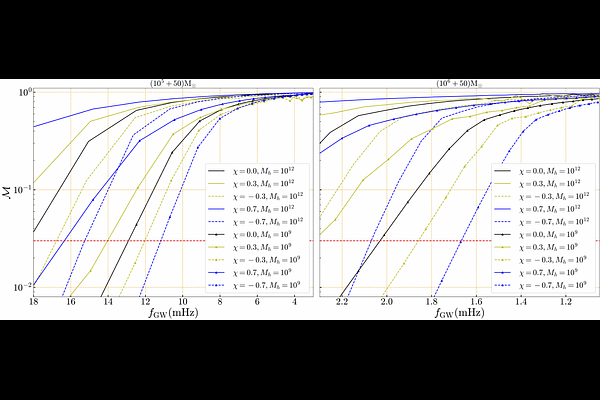Extreme mass ratio inspirals in rotating dark matter spikes

Extreme mass ratio inspirals in rotating dark matter spikes
Soumodeep Mitra, Nicholas Speeney, Sumanta Chakraborty, Emanuele Berti
AbstractGravitational wave (GW) signals from extreme mass ratio inspirals (EMRIs) are a key observational target for the Laser Interferometer Space Antenna (LISA). The waveforms may be affected by the astrophysical environment surrounding the central black hole (BH), and in particular by the surrounding dark matter (DM) distribution. In this work, we consider the effect of a rotating DM "spike" around a central Kerr BH, and assess its detectability with LISA. Using a fully relativistic model for the rotating spike, we investigate its effect on the inspiral and hence on the emitted GW signals. We compute dephasings and mismatches to quantify how the spin of the primary BH affects the binary dynamics and the gravitational waveform. We show that the modifications due to the spin of the primary BH improve the detection prospects of DM spikes with LISA, and must be taken into account for future parameter estimation studies. We also estimate within post-Newtonian theory how the environment affects the background metric, and show that this effect is mostly negligible for the systems we consider.